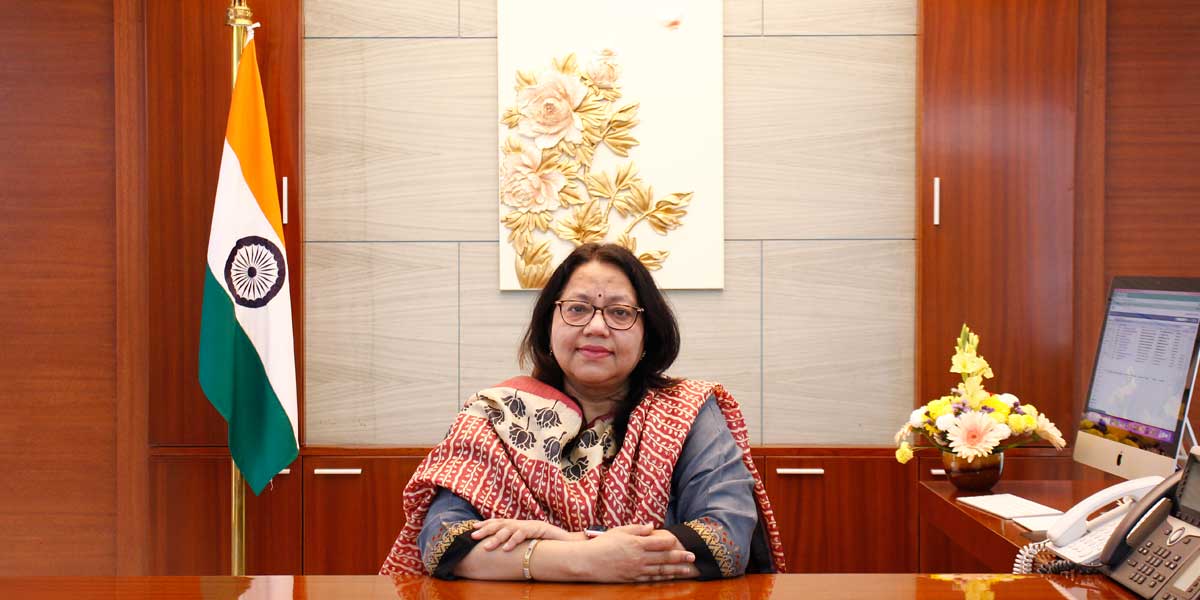

As a part of a major bureaucratic reshuffle, Alka Upadhyaya – a 1990 batch IAS officer of Madhya Pradesh cadre was appointed as the Chairperson of National Highways Authority of India (NHAI). Of all the projects that she has been associated with, she shares insights on what she considers most noteworthy.
Excerpts:
In 2017, Government of India launched India’s largest highway infrastructure programme till date, Bharatmala Pariyojana, to develop 34,800 km of National Highway corridors at an investment of Rs 5.35 lakh crore under Phase-I. As a part of this programme, 22 flagship greenfield corridors of length 7,700 km have been envisaged at Rs 3.3 lakh crore, in addition to capacity augmentation of existing roads through brownfield projects to cater to the increasing traffic volumes in major corridors. Bharatmala Pariyojana will also move the logistics needle in the country by doubling the speed of road freight movement from ~40 km per hour to ~80 km per hour.
Identification of corridors: Identification of critical and important corridors was a challenging exercise, which was undertaken based on scientific Origin – Destination (OD) survey of traffic and forecasting supported by assessment of macro-economic variables (Example: Commodity growth, and GDP growth at district level).
Optimisation of corridors: Optimisation of alignments to minimise commute time was another challenge that was surmounted through leveraging of technological tools such as LiDAR, GIS to understand the topographical opportunities and challenges of the corridors. Significant emphasis was laid in ensuring minimal ecological impact of highway development and at the same time reducing the distance and time of travel between key economic clusters, while improving connectivity to hitherto poorly connected regions of the country.
Implementation of projects: A programme of this scale requires coordination with multiple stakeholders, viz, multiple state governments, Central Government agencies such as MoEF&CC, Ministry of Railways, and private ecosystem of constructors and service providers. Multiple digital interventions such as Bhoomi Rashi portal for land acquisition, Datalake for digital end-to-end programme management were conceptualised and implemented to ensure expeditious issues identification and resolution to fast-track the programme.
Minimising human-animal conflict and maintaining wildlife and ecological balance while implementing road projects: NHAI has developed and is developing several structures for crossing of animals (underpass/ overpass/ tunnel). The notable structures being 4.9 km Twin Tube Tunnel for Wildlife Habitat in Mukundra National Park; 7.52 km long Overpass Structures (7) for Ranthambore Tiger Reserve; 1.4 km long Elevated Structure for Pench Reserve Forest; & 2.9 km long Overpass Structures (5) for Navegaon National Park & Nagzira wildlife sanctuary.
Plantation along National Highways: The authority has been planting trees along the highways (Avenue and Median plantation) to maintain green cover and give a pleasant feel to the road users. It has planted 65 lakh trees this year and geotagged 1.72 crore trees. Plantation shall continue to be a priority activity. We are roping in National Rural Livelihood Mission (NRLM), State Rural Livelihood Mission (SRLM), Central Silk Board and State Forest Corporations for massive plantation work.
Wayside Amenities (WSA): NHAI is developing wayside amenities along NH. This year the target is to award 100 WSAs. Already work has been awarded on 58 sites this year.
National Electronic Toll Collection (NETC) Programme: Collection of user-fee through FASTag was made mandatory in December 2019, and from February 2021, all lanes at toll plazas have been made ETC lanes. ETC Penetration was 47 per cent in December 2019, which raised to 96.5 per cent now with a daily collection of around Rs 115-118 crore. And 47.3 million FASTags have been issued and 992 toll plazas are under NETC Programme.